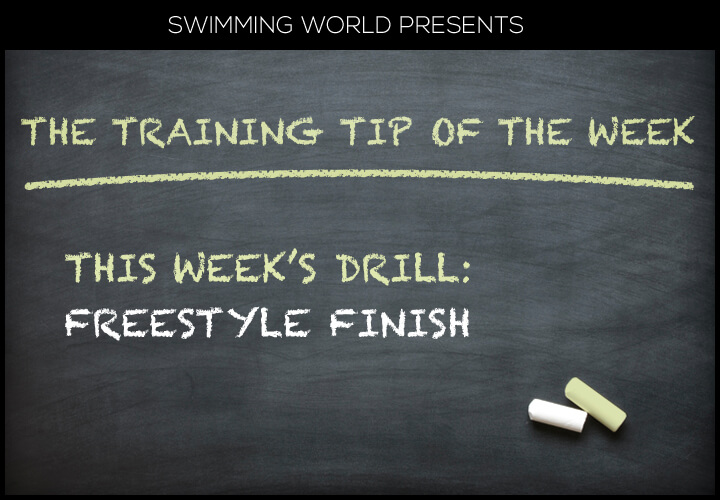Training Tip of the Week: DPS – Freestyle Finish

Welcome to the “Training Tip of the Week.” Swimming World will be bringing you a topic that we’ll explore every month with drills and concepts for you to implement with your team on a regular basis. While certain weeks may be more appropriate for specific levels of swimming (club, high school, college, or masters), Training Tips of the Month are meant to be flexible for your needs and inclusive for all levels of swimming.
This month’s training tip is centered around Distance Per Stroke (DPS). This is a term that is thrown around a lot in swimming, and for good reason. The greater your distance per stroke, the more efficient you are moving through the water, which ultimately makes for faster swimming.
This week, we are going to focus on another key elements of distance per stroke: the finish of the freestyle pull. You can read other week’s tip related to distance per stroke, front end extension and high elbow catch, by clicking here and here.
A major part of setting up your stroke for a strong finish is making sure you have a consistent high elbow catch, so look at last week’s article for tips to set that up. The stronger your initial contact with the water is, the stronger (and more efficient) your final contact with the water will be.
A common problem with swimmers is either slipping through the second half of their stroke or exiting the water too soon. While everyone’s stroke will be slightly different, make sure your athletes are applying force all the way through their freestyle pull. An easy drill to work on this is finish drill, which is a simple drill that exaggerates the second half of the pull and exit from the water.
Similarly, any drill that slows down the stroke will let the focus shift to the power in the second half of the stroke. While drills like 6 kick switch or 3-6-3 work on body position, they also provide the opportunity to “reset” between strokes and focus on power and length as well.
Video review is great during these drills because athletes can’t always perceive when they are exiting the water early. Underwater filming from the side will let your swimmers see if they are slipping in the last phase of their stroke, and even grabbing your phone and taking video above water will be useful if someone is exiting the water water early.
All swimming and dryland training and instruction should be performed under the supervision of a qualified coach or instructor, and in circumstances that ensure the safety of participants.



